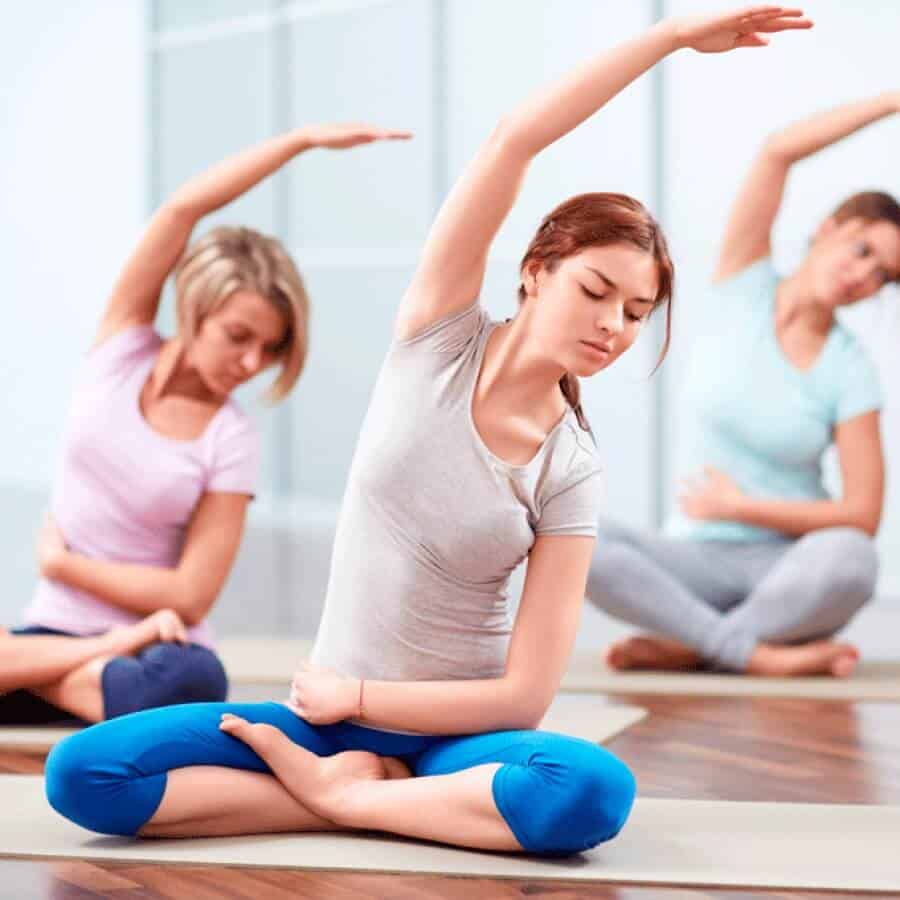Yoga as a phenomenon and a trend gained popularity in the early 20th century, when its positive effects on the state of the human organism, in terms of both physical and emotional/psychosocial health, were practically and theoretically determined. Modern medicine today mentions in all studies that natural and alternative treatments in a huge percentage of cases can have very noticeable effects, both respecting the prevention and the treatment of various diseases. Medical yoga is extremely appreciated in this context among doctors, especially as it helps to develop a positive state in the individual not only by treating the disease but also by eliminating psycho-emotional blockages that are often the main causes of a disease.
The mechanism through which yoga acts to eliminate both symptoms and underlying illness itself is by establishing a balance of the body and mind, with the aim of developing a close relationship that will encourage the patient’s awareness of the self-presentation of health. Yoga rests on the foundation of a traditional Eastern culture that promotes the attitude that the stability of the soul and thought influences the physiology of the organism, hence the whole yogic concept encourages the absence of illness by rejecting poisonous, negative thoughts and releasing them from consciousness. Accordingly, professional literature defines yoga as “an old practice or tool based on the alignment of the body, mind, and spirit through which inner peace and the liberation of negativity are achieved” (Taimini; Feuerstein). However, in order to make such a thing possible, it is extremely important to develop a sense of life in the present moment.
What does it mean to live in the present?
In practical terms, this implies the development of sensory feelings and the realization of events in the present. Thus, yoga eliminates feelings about what will happen or what has happened, it crystallizes the ability to live in the “NOW.” This stimulates conscious brain frequencies and targets the repair of injured or modified cellular systems. Thus, patients learn not to think about their future or past illnesses, but to realize that at the present time with a given diagnosis they can live, they can think, and they can become aware of themselves and the environment that surrounds them. Given the fact that disease has not developed, worsened, or spread, spiritual riots disappear, and a state of relaxation is achieved in the body’s natural means to resist disease.
What is the essence of applying yoga?
Today, there are many modifications of yoga, but yoga as used for medical purposes is not magic, but according to the views of Ina Stephens, a scientist at the University of Virginia Medical Center, this includes “special breathing techniques, body positions, techniques of meditation and self-reflection, a healthy psycho-emotional circuit, and healthy thoughts.” Hence it can be said that the essence of yoga is to develop conscious logic and reasoning for patients, and also to direct them to think positively, and accurately assures them that by changing certain habits, ways of life, attitudes, and thoughts, the body organism will prove to be self-renewing as respects its natural healing processes. This does not mean that patients refuse their prescribed treatment and rely only yoga therapy, but that they use the benefits of yoga as an additional treatment.
How does yoga work on the body?
Yoga acts positively through a return of hormonal coupling, as in contrast to other forms of physical activity, the rhythmic breathing induced by yoga during exercise stimulates a stable and balanced relationship between the parasympathetic and sympathetic nervous system and the release of prolactin and hormone oxytocin (via GABA neurotransmitter). These reactions reduce the circulation of cortisol levels and have been shown to reduce the manifestation of stress in the body. During 2013, research was carried out among various patients with cardiovascular problems, carcinomas, diabetes or respiratory diseases, and data were obtained to demonstrate that in 100% of clinical cases using yoga as therapy, the level of cortisol significantly decreased relative to patients receiving only medical therapies, without practicing yoga exercises. A similar study was repeated in the period 2014-2016 to observe specifically certain categories of patients (children, women, elderly people) and the same results were obtained, which confirms the success of yoga as a therapy, and also as a means of eliminating stress – one of the main causes of many diseases in the modern age.
Photo: Shutterstock
Support us!
All your donations will be used to pay the magazine’s journalists and to support the ongoing costs of maintaining the site.
Share this post
Interested in co-operating with us?
We are open to co-operation from writers and businesses alike. You can reach us on our email at [email protected]/[email protected] and we will get back to you as quick as we can.









